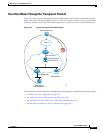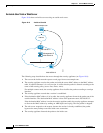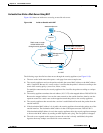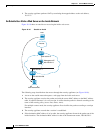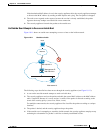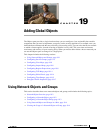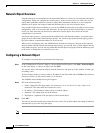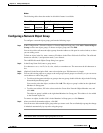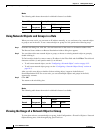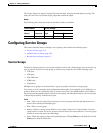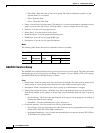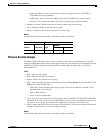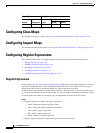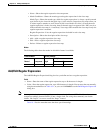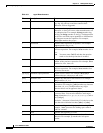
19-3
Cisco ASDM User Guide
OL-16647-01
Chapter 19 Adding Global Objects
Using Network Objects and Groups
Modes
The following table shows the modes in which this feature is available:
Configuring a Network Object Group
To configure a network object group, perform the following steps:
Step 1 In the Configuration > Firewall > Objects > Network Objects/Group pane, click Add > Network Object
Group to add a new object group, or choose an object group and click Edit.
You can also add or edit network object groups from the Addresses side pane in a rules window, or when
you are adding a rule.
To find an object in the list, enter a name or IP address in the Filter field and click Filter. The wildcard
characters asterisk (*) and question mark (?) are allowed.
The Add/Edit Network Object Group dialog box appears.
Step 2 In the Group Name field, enter a group name.
Use characters a to z, A to Z, 0 to 9, a dot, a dash, or an underscore. The name must be 64 characters or
less.
Step 3 (Optional) In the Description field, enter a description up to 200 characters in length.
Step 4 You can add existing objects or groups to the new group (nested groups are allowed), or you can create
a new address to add to the group:
• To add an existing network object or group to the new group, double-click the object in the Existing
Network Objects/Groups pane.
You can also select the object, and then click Add. The object or group is added to the right-hand
Members in Group pane.
• To add a new address, fill in the values under the Create New Network Object Member area, and
click Add.
The object or group is added to the right-hand Members in Group pane. This address is also added
to the network object list.
To remove an object, double-click it in the Members in Group pane, or click Remove.
Step 5 After you add all the member objects, click OK.
You can now use this network object group when you create a rule. For an edited object group, the change
is inherited automatically by any rules using the group.
Note You cannot delete a network object group that is in use.
Firewall Mode Security Context
Routed Transparent Single
Multiple
Context System
• • • •—



